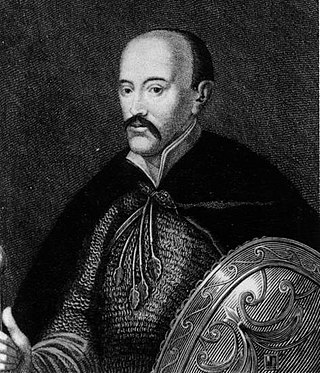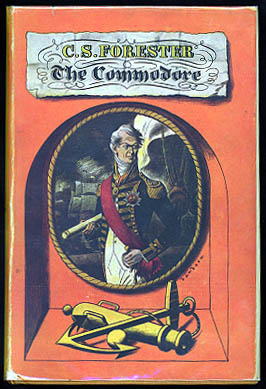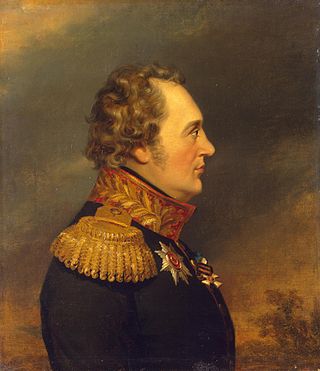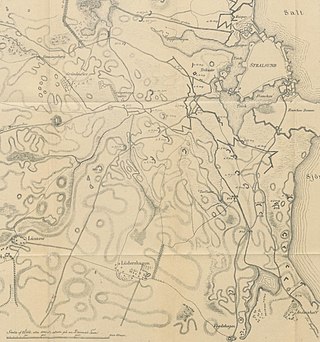
Josef Antonius Heinrich Terboven was a German Nazi Party official and politician who was the long-serving Gauleiter of Gau Essen and the Reichskommissar for Norway during the German occupation.

Herman Wrangel was a Swedish military officer and statesman of Baltic German extraction.

Count Gustav Horn was a Swedish nobleman of Finnish descent, military officer, and Governor-General. He was appointed member of the Royal Council in 1625, Field Marshal in 1628, Governor General of Livonia in 1652 and Lord High Constable since 1653. In the Thirty Years' War (1618–1648), he was instrumental as a commander in securing victory at the Battle of Breitenfeld, in 1631. He was High Councillor of the realm in 1625, elevated to the rank of field marshal in 1628, and sometimes commander-in-chief of Swedish forces in Germany during Thirty Years' War. After the war, he served as Governor-General of Livonia 1652, President of War department and Lord High Constable in 1653. In 1651, Queen Christina created him Count of Björneborg.

Field Marshal and Count Jacob Pontusson De la Gardie was a statesman and a soldier of the Swedish Empire, and a Marshal from 1620 onward.

Prince Michael Andreas Barclay de Tolly was a Russian field marshal who figured prominently in the Napoleonic Wars.

A commander-in-chief or supreme commander is the person who exercises supreme command and control over an armed force or a military branch. As a technical term, it refers to military competencies that reside in a country's executive leadership, a head of state, head of government, or other designated government official.

Count Hans Henric von Essen was a Swedish officer, courtier and statesman.

The Ingrian War was a conflict fought between the Swedish Empire and the Tsardom of Russia which lasted between 1610 and 1617. It can be seen as part of Russia's Time of Troubles, and is mainly remembered for the attempt to put a Swedish duke on the Russian throne. It ended with a large Swedish territorial gain in the Treaty of Stolbovo, which laid an important foundation to Sweden's Age of Greatness.

Ludwig Alexander Friedrich August Philipp Freiherr von Falkenhausen was a German officer most notable for his activities during World War I.

General Sir Edward Paget was a British Army officer.

Aleksander Korwin Gosiewskide armis Ślepowron, was a Polish nobleman, military commander and diplomat, Lithuanian Field-Quartermaster since 1630, Palatine-Governor of Smolensk from 1625, Lithuanian Great-Quartermaster since 1615, Speaker of the Parliament in 1613, Great-Secretary of the Grand Duchy of Lithuania from 1610 and District-Governor of Wieliż, Puńsk, Kupise, Biel, and Markowa.

The Commodore is a Horatio Hornblower novel written by C. S. Forester. It was published in the United States under the title Commodore Hornblower.

Nikolai Ottovich von Essen was a Russian naval commander and admiral descended from the Baltic German noble Essen family. For more than two centuries, his ancestors had served in the Imperial Russian Navy, and seven had been awarded the Order of St. George, the highest military award of the Russian Empire. Essen was regarded as one of the most prominent admirals of the Russian naval force during World War I (1914–1918).

The Dano-Swedish War of 1657–1658, known in Denmark as the First Karl Gustav War in Norway as Krabbes Feud and in Sweden as Karl Gustav's First Danish War, was a conflict between Sweden and Denmark–Norway during the Northern War of 1655–1660. In 1657, Charles X of Sweden and his Swedish army were Fighting in the Poland. Frederick III of Denmark-Norway saw an opportunity to recover the territories it lost in 1645 and attacked Sweden. The outbreak of war with Denmark provided Charles with an excuse to withdraw from the Polish campaign and move against Denmark.

Baron Gustav Evertsson Horn of Marienburg was a Finnish-Swedish military man and politician. He was a member of the Privy Council of Sweden and Governor General.

The Siege of Malmö was an unsuccessful Danish siege on the Swedish-held city of Malmö, fought between June 11 and July 5, 1677. Fought towards the end of the Scanian War, the siege was one in a string of Danish losses that saw Swedish forces under King Charles XI of Sweden establish control over the southern region of Sweden.

Magnus Gustav von Essen was a Baltic German lieutenant general and military governor of Riga at the start of the Patriotic War of 1812.

The siege of Stralsund lasted from 24 July to 24 August, 1807, and saw troops from the First French Empire twice attempt to capture the port city from Lieutenant General Hans Henric von Essen's 15,000-man Swedish garrison. Early that year, Marshal Édouard Adolphe Casimir Joseph Mortier blockaded the city for two months before he was called elsewhere. In his absence, the Swedes drove back the inferior blockading force. After Mortier returned and pushed Essen's troops back in turn, the two sides quickly concluded an armistice. The truce was later repudiated by King Gustav IV Adolf of Sweden, and Marshal Guillaume Marie Anne Brune then led 40,000 French, German, Spanish, Italian and Dutch soldiers against the fortress. Fearfully outnumbered, the Swedes abandoned the Baltic Sea port of Stralsund to the Franco-Allies in the action during the War of the Fourth Coalition, part of the Napoleonic Wars. As a consequence, Sweden also lost the nearby island of Rügen.

Count Peter Essen was a Baltic German General of the Infantry in 1819 and a count (1833). He belongs to the bourgeois Essen family from Pärnu. Essen's only daughter, Alexandrine Essen (1816–1868), married count Pontus von Stenbock-Fermor (1806–1866) in 1835, at which point they began using the joint name Essen-Stenbock-Fermor.

The Great Sortie of Stralsund was fought in the Franco-Swedish War on 1–3 April 1807, in Swedish Pomerania. A French army under Édouard Mortier invaded Swedish Pomerania in early 1807 and initiated a blockade of the Swedish town of Stralsund, to secure the French rear from enemy attacks. After several smaller sorties and skirmishes around Stralsund, Mortier marched part of his army to support the ongoing Siege of Kolberg, leaving only a smaller force under Charles Louis Dieudonné Grandjean to keep the Swedes at check. The Swedish commander Hans Henric von Essen then commenced a great sortie to push the remaining French forces out of Swedish Pomerania. The French fought bravely on 1 April at Lüssow, Lüdershagen and Voigdehagen, but were eventually forced to withdraw; the Swedes captured Greifswald the next day, after a brief confrontation. The last day of fighting occurred at Demmin and Anklam, where the Swedes took many French prisoners of war, resulting in the complete French withdrawal out of Swedish Pomerania—while the Swedes continued their offensive into Prussia. After two weeks Mortier returned and pushed the Swedish forces back into Swedish Pomerania. After an armistice the French forces once again invaded, on 13 July, and laid siege to Stralsund, which they captured on 20 August; all of Swedish Pomerania was captured by 7 September, but the war between Sweden and France continued until January 6, 1810, when the Swedes were finally forced to sign the Treaty of Paris.




















